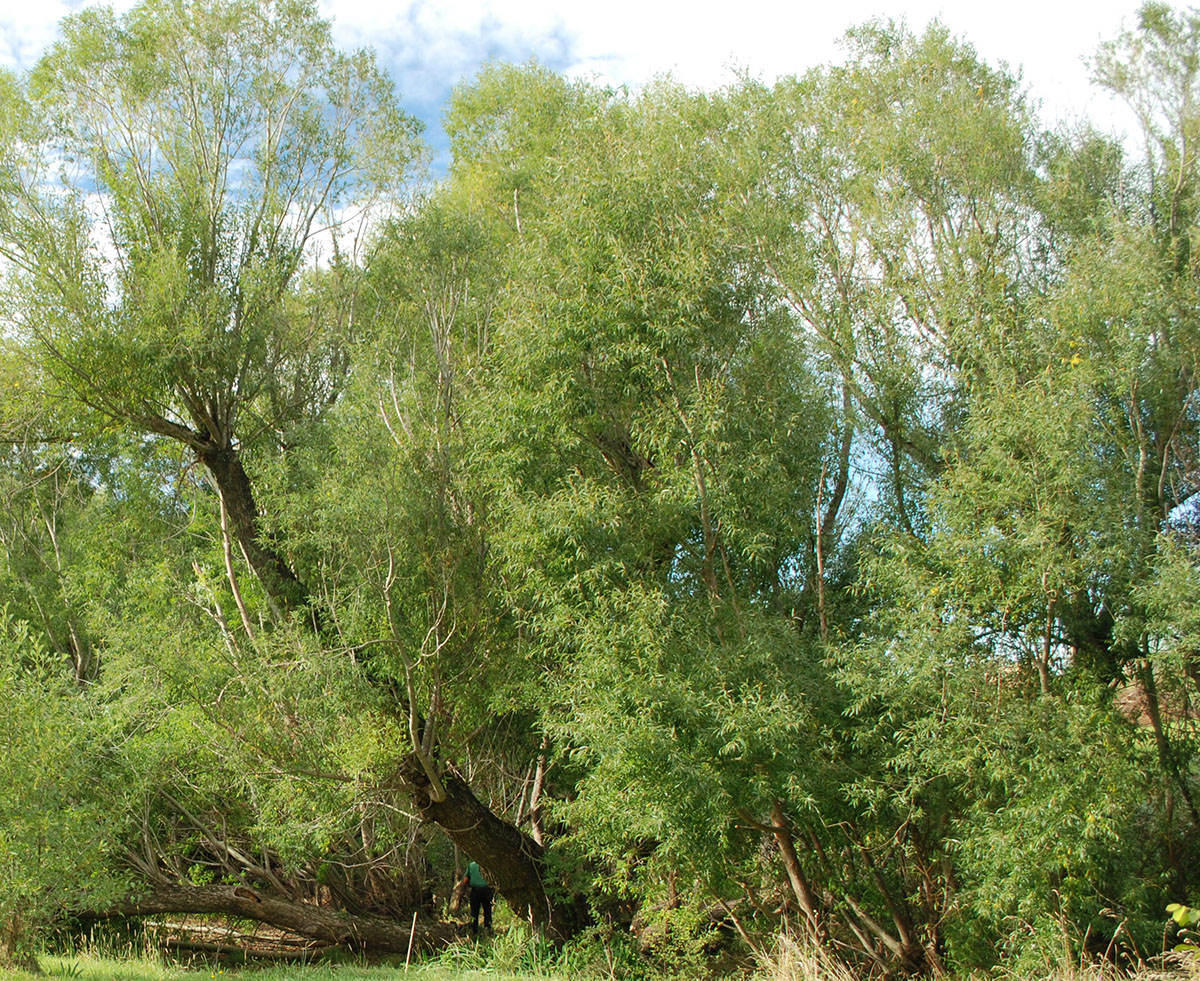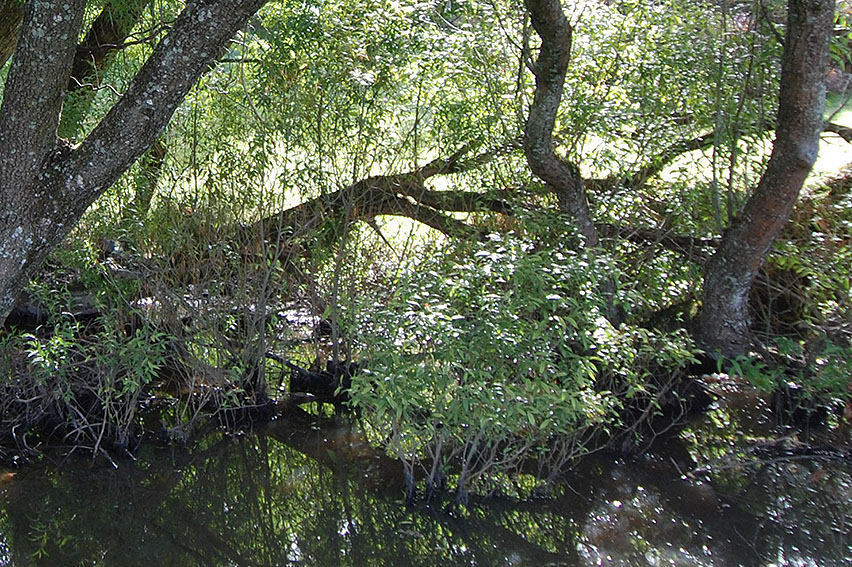Crack willow

Where is it found?
See the distribution map (when page opens, just click on the green ‘search’ button without changing any of the settings)
Why is it a problem?
Willows have been extensively planted in NewZealand as shelter belts, for stock fodder, to prevent soil erosion, and along river and streambanks (riparian zones) to manage watercourses. They are now the second most common exotic tree after radiata pine.
- Even the smallest stem fragments can take root anywhere that’s damp, and are readily spread downstream
- Root suckers spread locally
- Cut stumps regrow rapidly
- Grows rapidly, creating dense thickets
- Very tolerant of flooding, can grow in a wide range of temperatures and in semi-shaded areas
- Quickly replaces native species along waterways and forms vast dense (often pure, ie excluding all other plants) stands along channels
- Stabilises braided river gravels, preventing the natural re-shaping of channels during freshes, changing the entire structure and flow of waterways and creating an environment completely unsuited to endemic species (see research: “Crack willow fails to provide the same resources for these animals as the native counterpart… Invasion of riparian zones by crack willow has a detrimental effect on these valuable ecosystems!”
- Absorbs so much water that river levels can drop and disappear altogether in places
What does it look like?
Crack willow (Salix fragilis) is a deciduous tree that can grow up to 25 m tall. While their branches don’t droop like weeping willows, they break off easily with an audible ‘crack’. The leaves are narrow and lance-shaped, often with bright red swellings on them. They flower around the same time as the leaves re-appear in Spring. The yellow-green flowers are up to 7.5cm long and 1cm across. No fruit is formed as there are only male plants in New Zealand. The roots form dense mats.

Conservation activities
So many rivers are choked with crack and grey willow that the focus has been on removing willows just in the fairway of the river rather than the banks. See Weedbusters for more information.
If you are looking to control willows on your property:
Poisoning method
1. Cut and squirt (summer-autumn) or bore and fill: Make 1 cut or hole every 100 mm around the trunk and saturate each cut or hole with undiluted glyphosate (10ml) or 2,4-D ester (20ml).
2. Frilling (summer-autumn): glyphosate (100ml/L) or 2,4-D ester (200ml/L).
3. Spray (full leaf stage only): glyphosate (12.5ml/L + penetrant, total coverage needed) or metsulfuron-methyl 600 g/kg (5g/10L in December).
Almost all cut stems root where they fall. Cut stumps regrow rapidly. Do not fell unless all plant material can be disposed of at a refuse transfer station or by burning. Best to poison while standing to avoid live stem contact with the ground. Prevent grazing and other disturbance. Interplanting can follow if non-spray follow up control options used.
Non-poisoning method
The photos on this page were along a waterway on my lifestyle block. All living crack- and grey willow trees were cut down and bulldozed into fire pits and later burned. Sheets of black plastic were tied or nailed over stumps to prevent re-growth. Sheep like the salicylic acid in the bark and leaves of the willow and poplar trees, so grazing them on afflicted paddocks for 3 years prevented re-growth. Waterway later fenced and replanted with natives.
